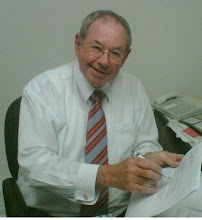Newsletter March 2006
Hi – this is Bernard Kelly again of retirelaughing.com
Today’s topic is one issue that I can’t explain successfully on my Thursday afternoon (drive time) radio show - but it's easy to see in writing.
HOW TO CALCULATE CAPITAL GAINS TAX
We all know about Capital Gains Tax – right?
Well no – actually.
We’ve all heard about it, but actually knowing how to calculate its impact – well, that’s another matter.
Until now.
In this issue of my newsletter, I will give you an example of its impact – and – wonders will never cease, did you know that you can never pay more than 25% of the gain?
So let’s start with an example
Let’s assume that you had purchased an investment property from a developer for $200,000 in 2000 and were selling it for $800,000 twenty years later.
Now – to determine the depreciation - let’s further assume that the cost of the structure was half of the original $200,000 purchase price i.e. $100,000 and that there were chattels of $10,000 included.
And it’s also important to use – for the calculation – acquisition costs of say $10,000 and disposal costs of say $40,000.
Now to the calculation
From the disposal price of $800,000 we now deduct the obvious i.e. the purchase price $200,000, acquisition costs $10,000 and disposal costs $40,000.
So the notional gain was $550,000.
However to this notional gain we must add back the depreciation that we have previously claimed. This is the sum of both the depreciation on the structure (2 ½% of $100,000 per year for 20 years) i.e. $50,000 plus the depreciation on the chattels – and we find that the possible total of the $10,000 has long since been claimed.
So we must add back this $60,000 to the gain of $550,000 to determine the total gain i.e. $610,000.
Now the legislation that sets out the calculation ignores half of this gain, and we are then taxed – at our marginal tax rate – on the balance.
So on the highest marginal tax rate, the determination is 48½% of half of $610,000 i.e. 48½% of $305,000.
The result is that we must pay the taxman $147,925 of the $610,000.
As I said above, this is less than 25% of the gain – even when you’re on the maximum tax rate.
* * * * *
Now for the real-life application of all of this
The majority of my private clients are Baby Boomers, who often still have a mortgage, and insufficient superannuation, and are uniformly concerned about how to finance 15-20-25 years of retirement.
They are now racing to put additional financial assets in place - to enable them to avoid the aged pension, and retire gracefully.
Once they have explored their options, they often find that property investments are probably their best solution. But they have heard about this nemesis called Capital Gains Tax.
However, when they retire, their income would normally fall – and let’s say that their marginal tax rate fell to 20%.
So in the example above, their capital gains tax would be calculated as 20% of $305,000 i.e. the tax payable would then be $61,000!
This is just 10% of the $610,000 gain!
Which is why I recommend that you should hold until at least retirement, and maybe well into your retirement.
I say this because whatever super you have is a financial asset that loses its purchasing power over time.
So logically, you should live off your super until it’s exhausted, and let your property assets run through at least one more cycle.
Because you can anticipate that both property values and rents will continue to increase over time.
Until next time
Bernard Kelly 0414 778 518 www.retirelaughing.com


0 Comments:
Post a Comment
<< Home